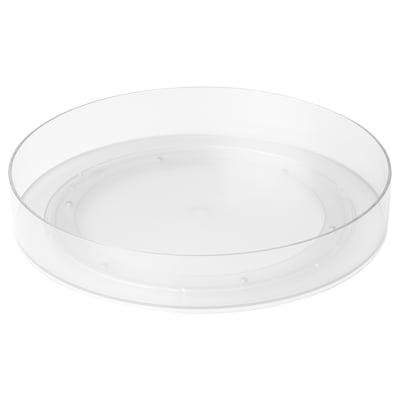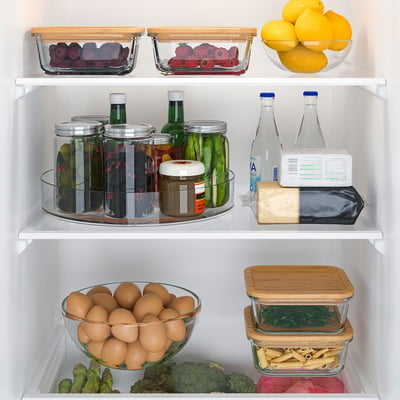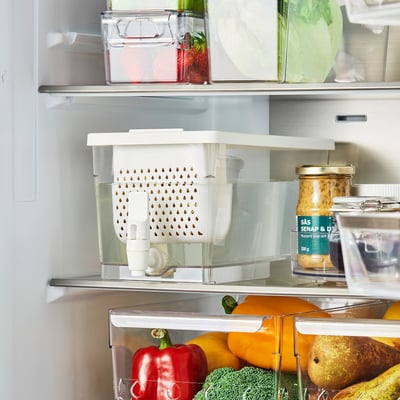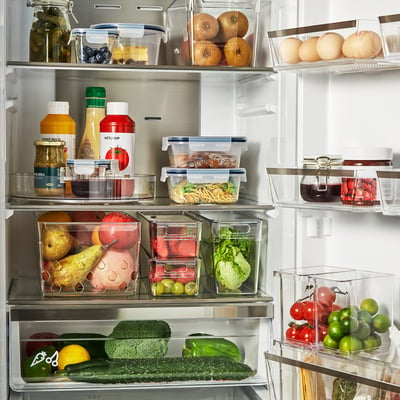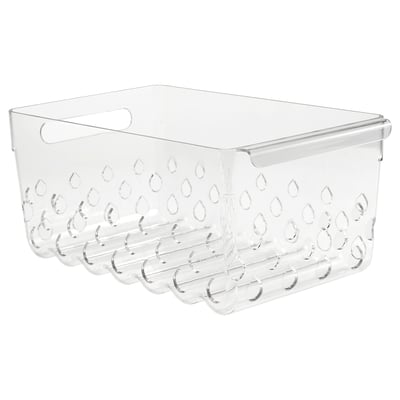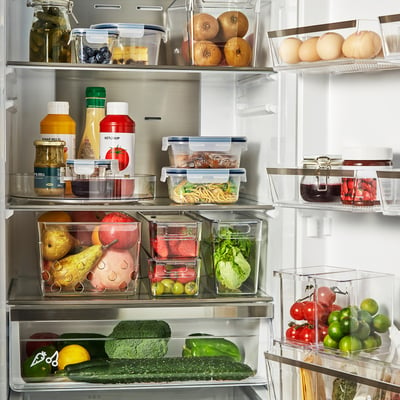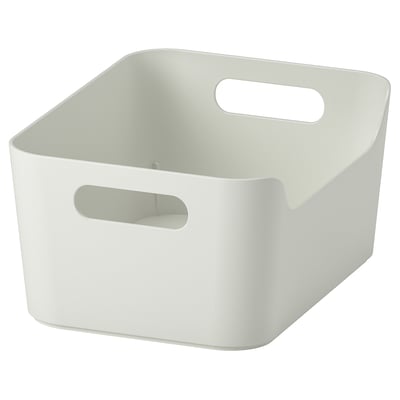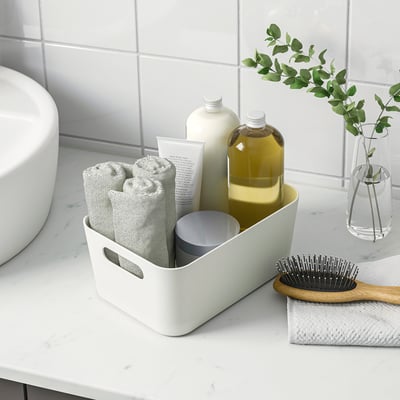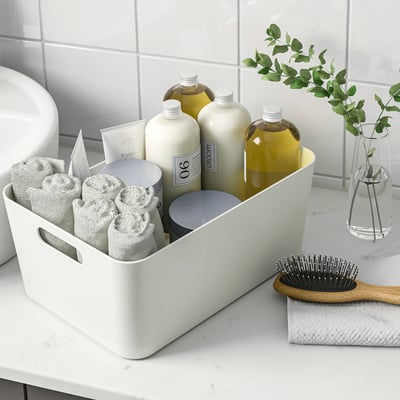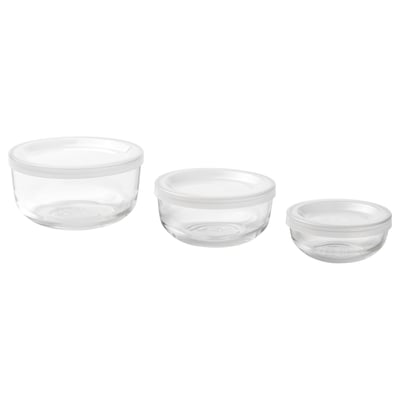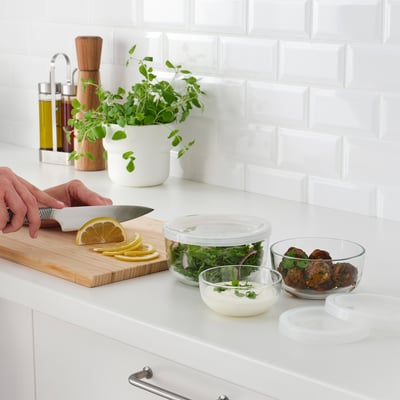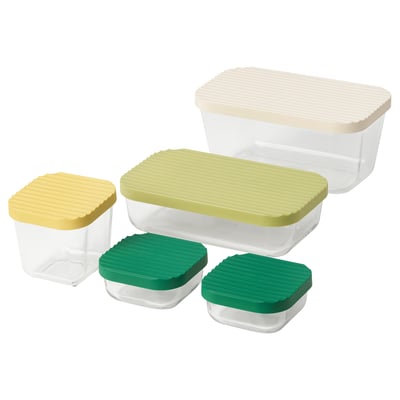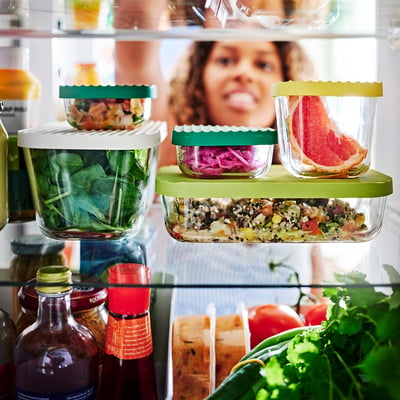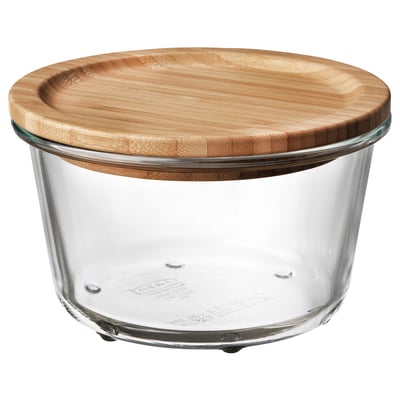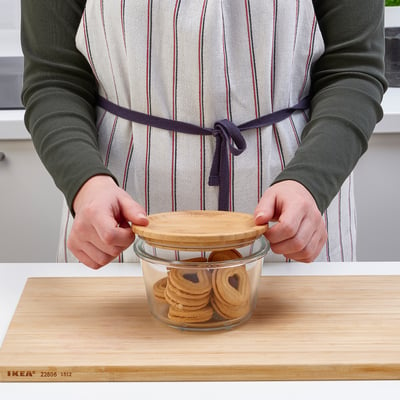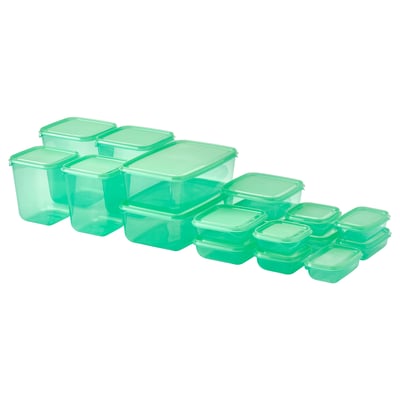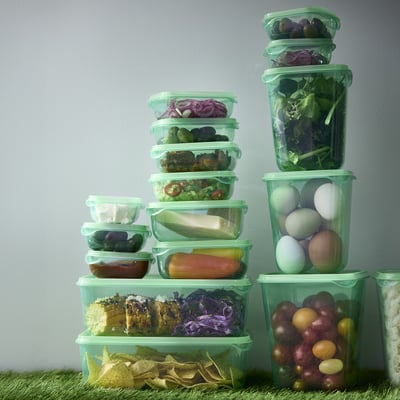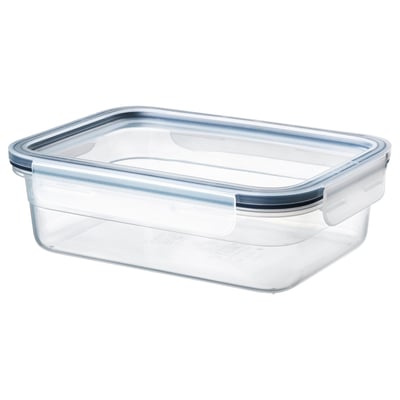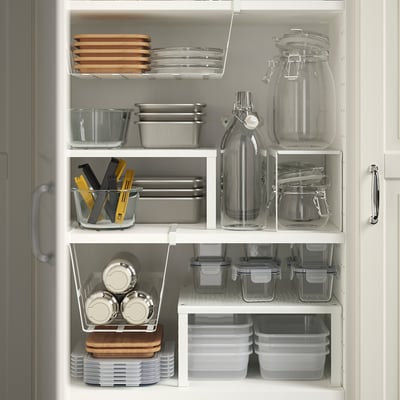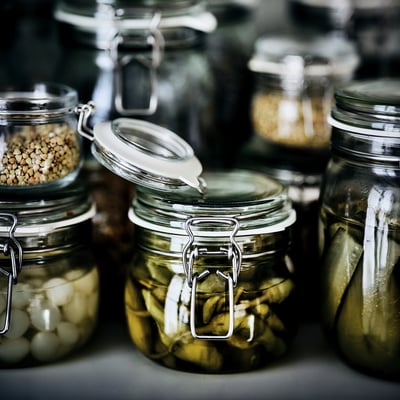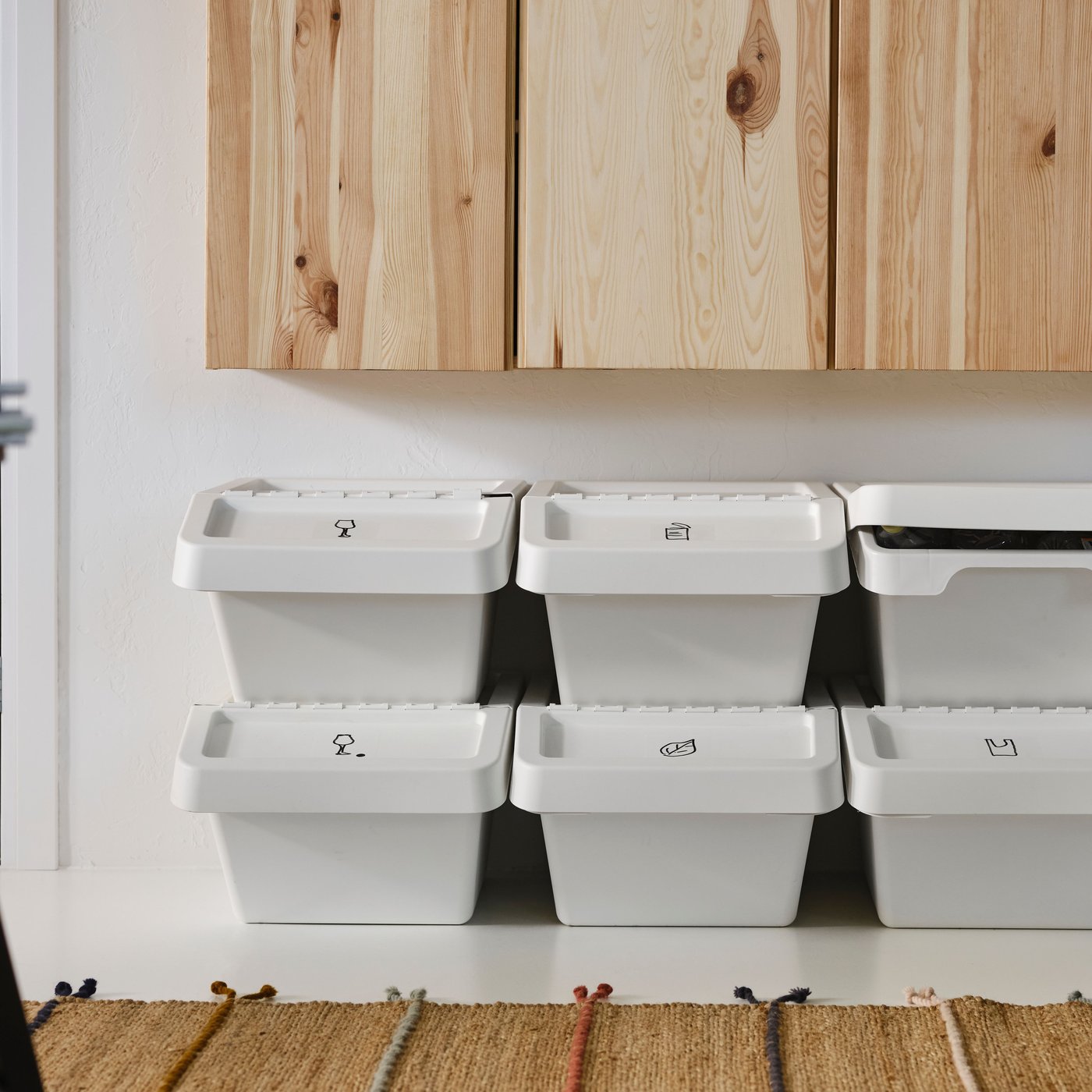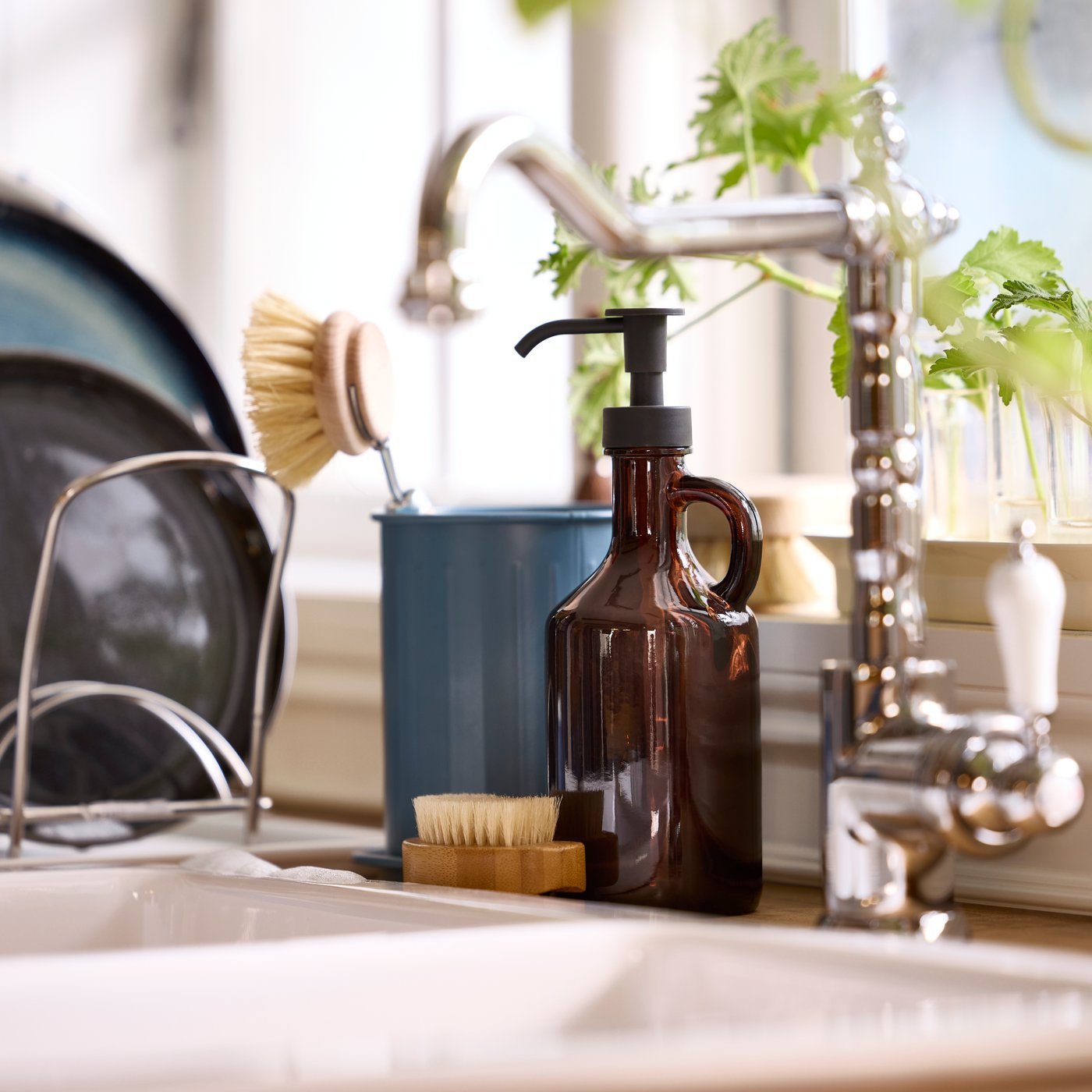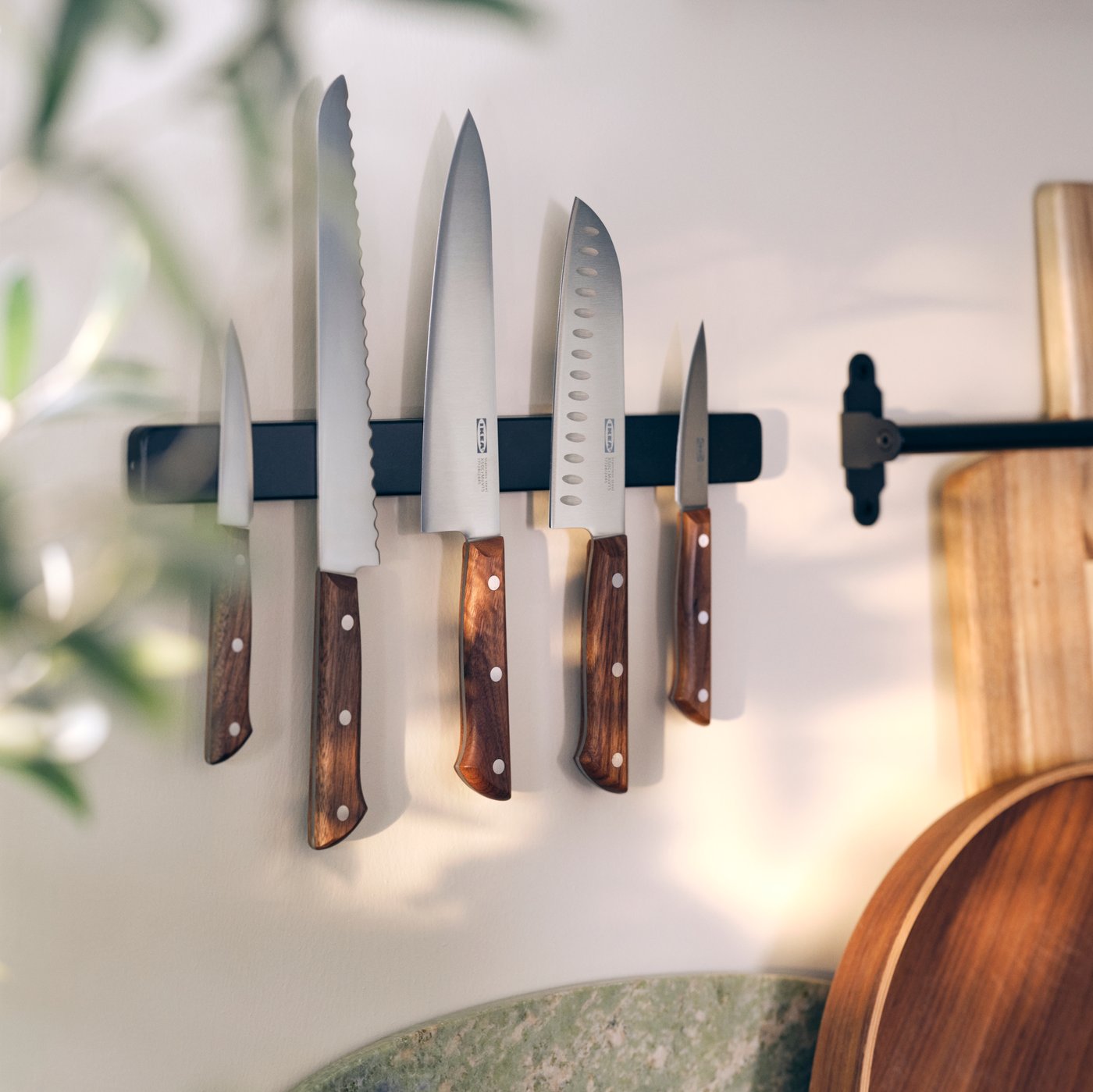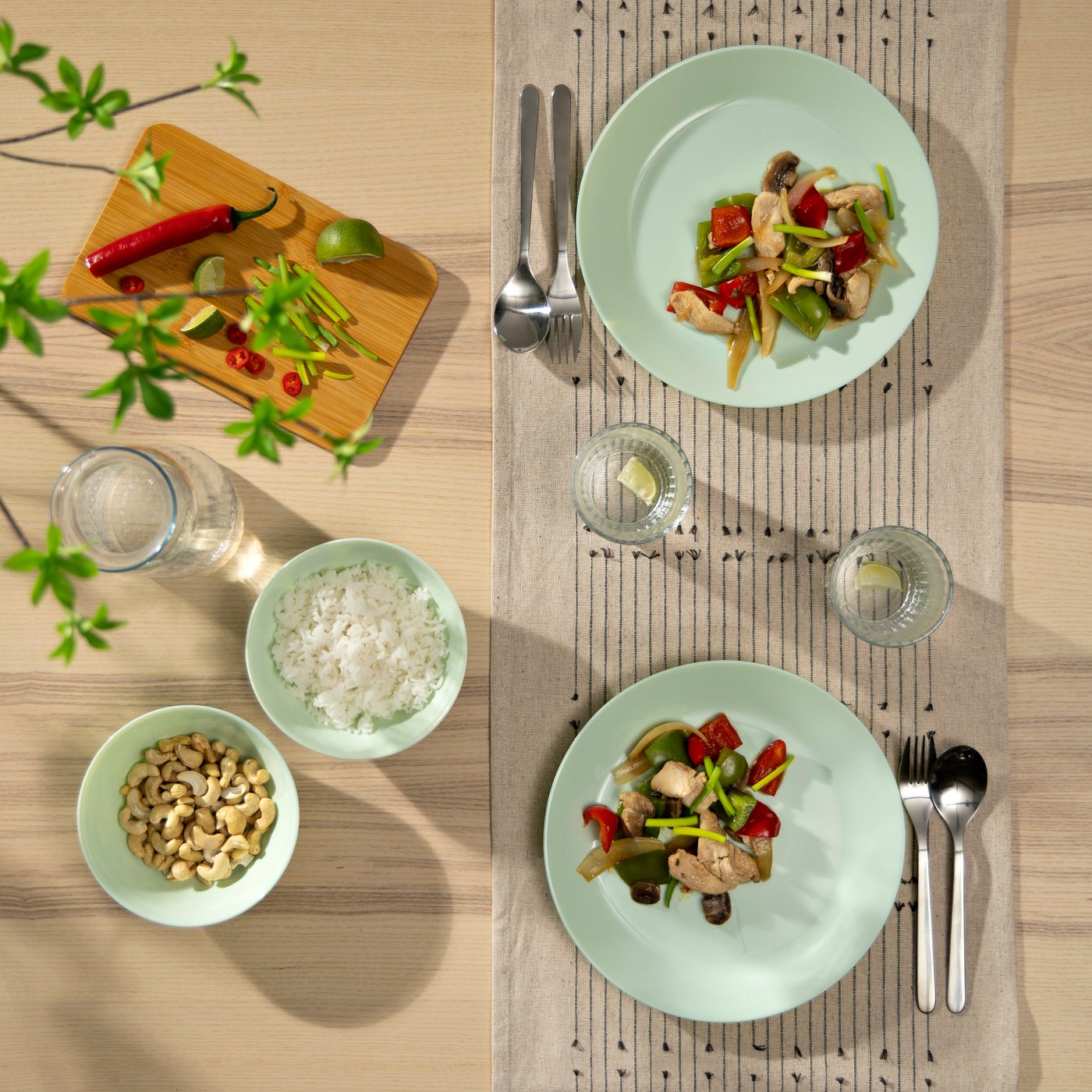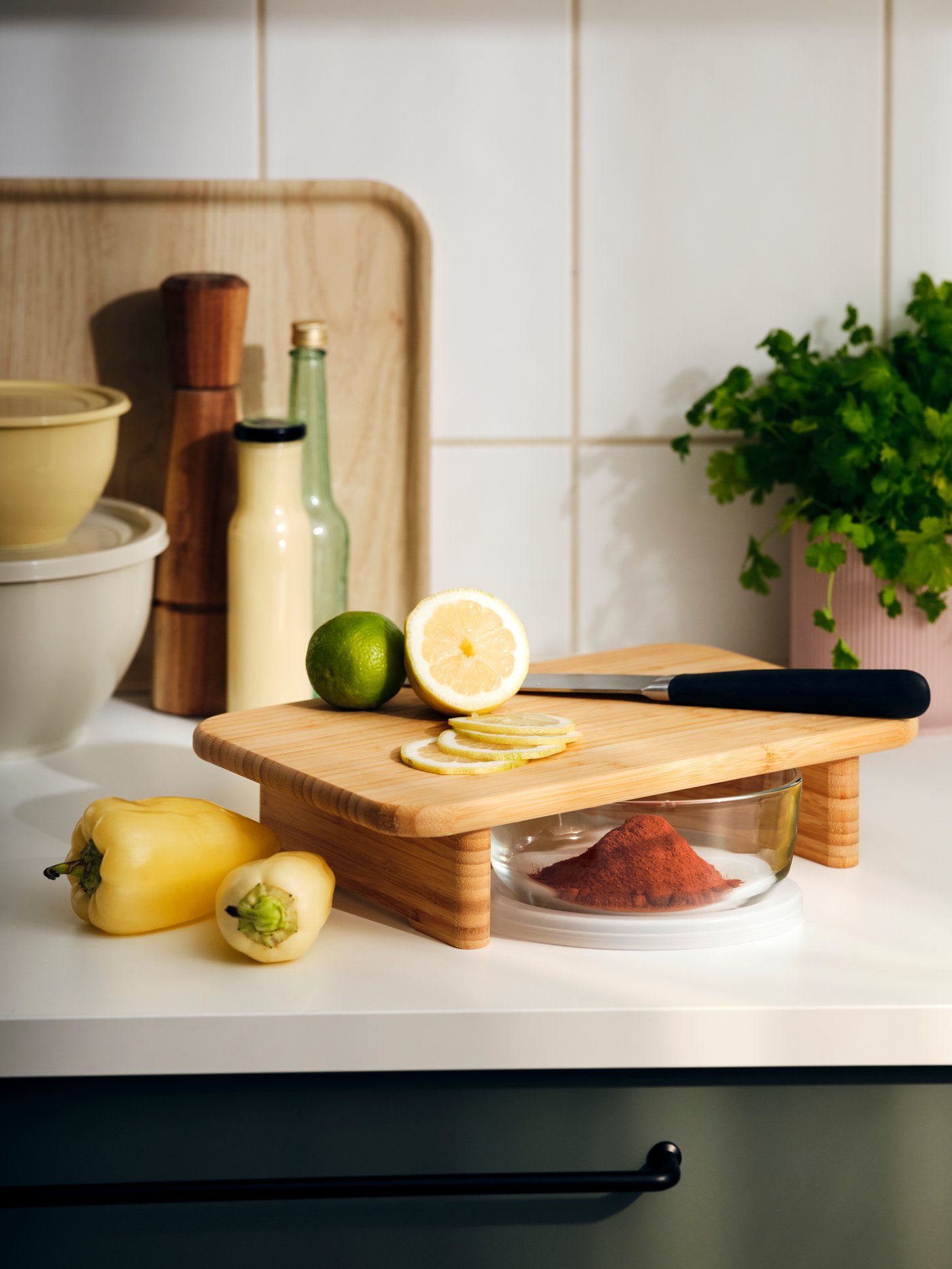Easy ways to organise your fridge
Fridges easily get disorganised and messy with daily use, often resulting in strange mystery boxes and unnecessary food waste. Here are some easy tips to help you improve organisation and free up useful space in your fridge.
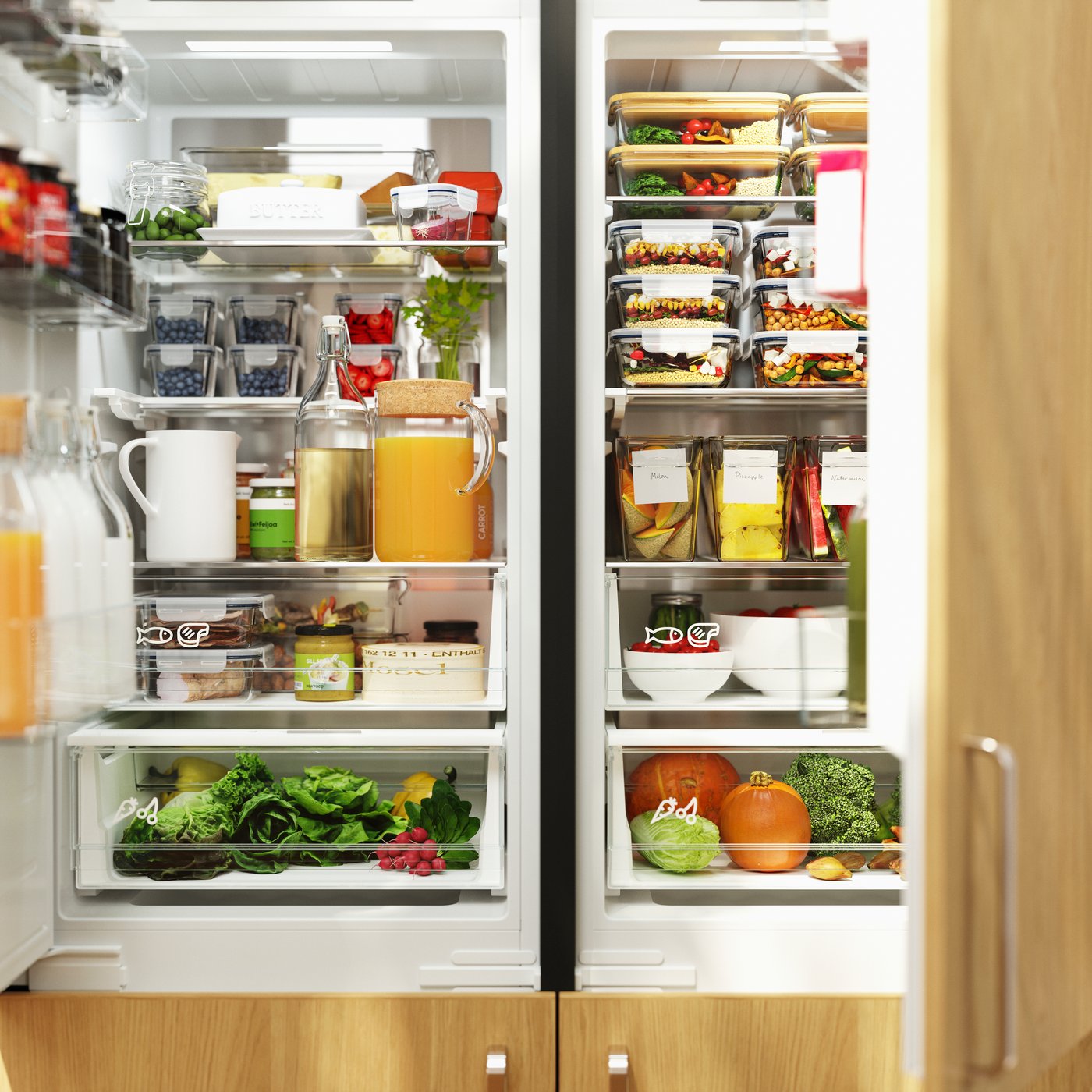
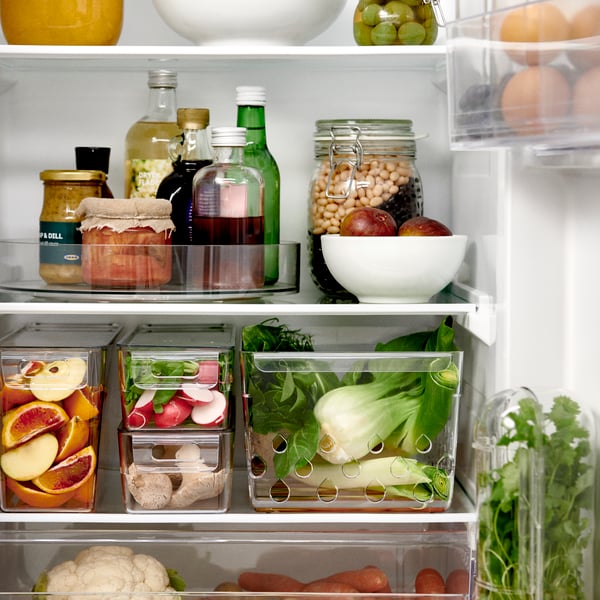
- Product information page
Organise your fridge in 5 easy steps
It’s best to start with a thorough cleaning. It makes organising everything more rewarding and you’ll be more pleased with the end result.
• Empty the fridge and wipe all surfaces clean
• Plan the placement of everything
• Group similar contents in handy storage boxes
• Clear containers make it easy to see what’s inside
• Some foods don’t belong in the fridge
Quick and easy ways to organise your fridge at home
Opening your fridge shouldn’t feel like a treasure hunt. With a few smart habits and the right storage, you can turn every shelf into a tidy, time‑saving zone. Here’s your step‑by‑step plan to organise your fridge, reduce food waste, and make everyday cooking easier—using affordable IKEA solutions along the way.Step 1 — Start fresh: declutter, clean, reset
Take everything out. Group items by type—dairy, produce, leftovers, condiments—then wipe shelves and drawers. As you reload, check dates and move older items to the front. This is the foundation of any organisation system and makes every next step effortless.Pro tip: Keep a small caddy on your counter for “mystery jars” and stray packets while you clean. When you’re done, only the keepers go back in.
Step 2 — Create “Cold Zones” from top to bottom
Fridges work best when items live in the right places. Use the top shelf for ready‑to‑eat foods, middle shelves for dairy and frequently used items, and the bottom shelf for raw ingredients you need extra cold (keep them sealed). Fruits and vegetables belong in the crisper drawers. The door is perfect for sauces and condiments.
Step 3 — Contain & Label: See More, Waste Less
- Store leftovers in same‑size containers so they stack neatly.
- Corral small items like ginger and chilies in a shallow bin.
- Use a low‑profile turntable so sauces never get lost at the back.
Step 4 — Organise for Real Life in an Indian Kitchen
- Breakfast zone: Milk, dahi/curd, spreads, cut fruit—keep at eye level for busy mornings.
- Cooking base zone: Ginger‑garlic paste, green chili, tomato purée—group together for faster prep.
- Batter box: Store idli‑dosa batter in lidded containers with headroom on a middle shelf.
- Protein shelf: Paneer and cooked dals on one side; raw meats (if any) sealed and isolated on the coldest shelf.
- Snack station: Pre‑washed grapes, carrot sticks, yoghurt cups—front and centre to encourage better snacking.
Step 5 — Keep It tidy in 5 minutes a week
- Sunday reset: Quick scan, wipe spills, refresh zones.
- Eat‑Me‑First box: A small bin for open packs and leftovers—plan Monday meals around it.
- No overpacking: Leave some air space so the fridge cools evenly.
- Micro‑labels: Masking tape + marker = quick date tags everyone can follow.
Shelf‑by‑shelf cheat sheet
- Top shelf: Ready‑to‑eat foods (spreads, cooked leftovers, desserts).
- Middle shelves: Daily staples (milk, curd, paneer, fresh herbs in water).
- Bottom shelf: Raw ingredients that need it coldest (sealed to prevent drips).
- Crispers: One for fruit, one for veg; adjust vents if your model allows.
- Door: Sauces, pickles, condiments, beverages.
Foods you shouldn’t refrigerate
Not everything likes the cold. Keep tomatoes, onions, potatoes, bananas and whole avocados out of the fridge; use a pretty bowl or net bag on the counter to free up shelf space and preserve flavour.Explore more kitchen storage ideas in Kitchen storage & organisers.
Troubleshooting: common fridge clutter problems
- “I can’t see anything!” Use clear bins and a turntable; avoid opaque boxes for daily items.
- “Spills keep happening.” Contain raw ingredients in a dedicated bin; switch to airtight lids.
- “Veggies wilt too fast.” Separate fruit and veg drawers; line with a reusable cloth to manage moisture.
- “Leftovers die at the back.” Keep an Eat‑Me‑First bin at eye level and date‑label everything.
Frequently Asked Questions
What is the easiest way to organise a small fridge?
Create zones by shelf: ready-to-eat foods on the top, daily staples in the middle, and raw ingredients on the bottom. Use clear stackable bins, add a lazy-susan for sauces, and label leftovers with dates. Keep one “Eat-Me-First” bin at eye level.
Which foods should not be kept in the fridge?
Keep tomatoes, onions, potatoes, bananas, and whole avocados outside. Use a counter bowl or net bag to free up shelf space and preserve flavour.
How do I reduce food waste with better fridge organisation?
Use clear containers so you can see everything, practice FIFO (first in, first out) by loading new items behind older ones, and keep an “Eat-Me-First” bin for opened packs and leftovers.
Where should I store Indian staples like idli-dosa batter, dahi, and chutneys?
Store idli-dosa batter in lidded containers with headroom on a middle shelf. Dahi/curd and paneer prefer stable middle shelves. Chutneys and pickles go in airtight jars; group them on a turntable for quick access.
How often should I clean and reset the fridge?
Do a quick 5-minute weekly reset: wipe spills, move older items forward, and refresh the Eat-Me-First bin. Deep-clean monthly by emptying shelves and drawers, then re-zone as you reload.


